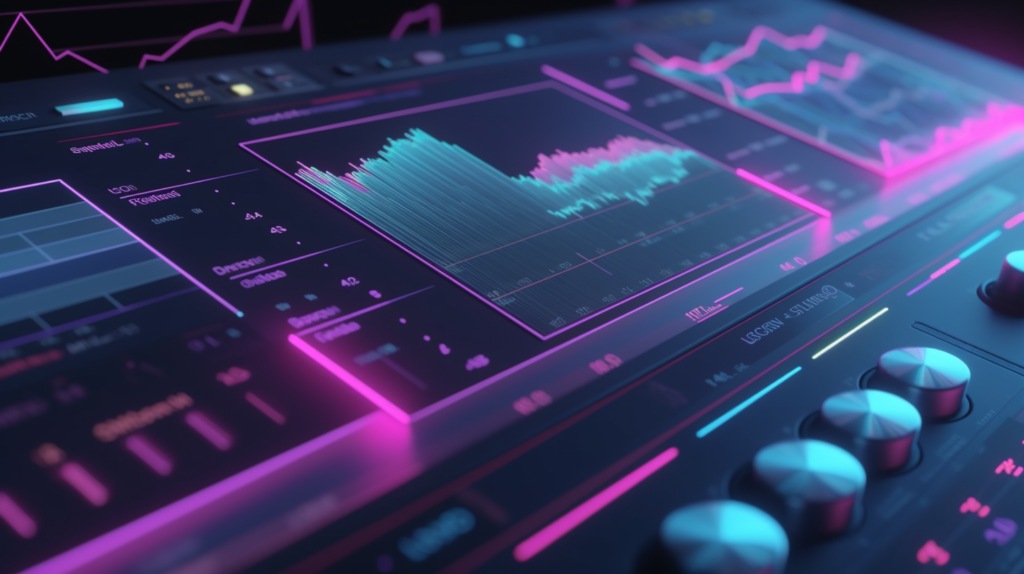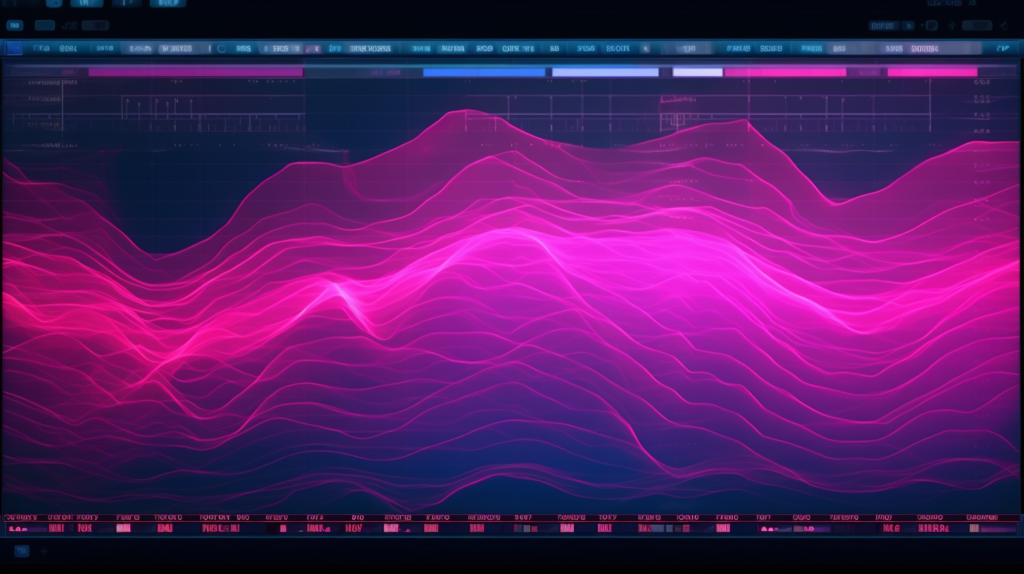Welcome to this comprehensive guide on equalization in mastering. As a music producer, understanding EQ techniques can make a significant difference in the quality of your final product. In this guide, we will dive into the world of equalization, covering essential topics like frequency balance, mid-side EQ, dynamic EQ, and linear-phase EQ.

Frequency Balance: The Key to Professional Sound
One of the core elements of equalization in mastering is frequency balance. Achieving the right balance across the frequency spectrum ensures that your music sounds polished and professional. As a music producer, it’s essential to understand how to identify and fix issues related to frequency balance.
When evaluating your mix, listen for areas where certain frequencies seem to overpower others or where some frequencies are lacking. This could be a sign that your mix needs EQ adjustments. As you work on your mix, remember that it’s not just about boosting or cutting frequencies – it’s about finding the right balance between all the elements in your track.
A well-balanced mix will translate well across different listening environments and devices, ensuring your music is enjoyed by a wider audience.
Mid-Side EQ: Unleashing the Power of Advanced Stereo Processing
Mid-side EQ is an advanced stereo processing technique that provides a remarkable level of control over your stereo image, making it a vital secret weapon for mastering. By enabling you to process the center (mid) and sides (side) of your stereo field independently, mid-side EQ offers unparalleled flexibility in shaping the sonic landscape of your mix.
To get started with mid-side EQ, it’s crucial to understand the basic principles behind this technique. The mid channel contains the audio information that is common to both the left and right channels, while the side channel comprises the audio information unique to each channel. This separation allows you to adjust specific elements within the stereo field without affecting other parts of the mix.
For example, if you want to emphasize the kick drum and bass, which are often located in the center of the stereo image, you can apply a low-shelf boost to the mid channel. Conversely, if you want to add clarity and width to the high frequencies in your mix, you can apply a high-shelf boost to the side channel.
Another practical use of mid-side EQ is to resolve potential masking issues between elements in the mix. For instance, you can create more space for a vocal by making a slight dip in the side channel’s midrange frequencies, allowing the vocal to cut through the mix without losing the sense of width and depth.
Remember that mid-side EQ should be approached with caution and subtlety. Overprocessing can lead to a disjointed, unnatural sound. Use mid-side EQ to enhance and refine your mix, rather than attempting to completely transform it.
Dynamic EQ: Achieving Surgical Precision in Your Mastering Workflow
Dynamic EQ is an invaluable tool for achieving surgical precision in your equalization process, granting you the ability to tackle problematic frequencies with unparalleled accuracy. Unlike a static EQ, a dynamic EQ dynamically adjusts the gain of a specific frequency range based on the input signal’s level. This means the EQ only kicks into action when the chosen frequency crosses a predefined threshold, giving you unparalleled control over the nuances of your mix.
Dynamic EQ excels in addressing issues that might elude a traditional EQ, such as resonance peaks, harshness, or excessive sibilance in specific frequency ranges. By applying dynamic EQ to these problematic areas, you can maintain a more natural, transparent sound while retaining the energy and character of your mix.
To effectively use dynamic EQ, follow these steps:
- Identify the problem area: Carefully listen to your mix to pinpoint the problematic frequencies that require dynamic EQ intervention.
- Set the threshold: Adjust the threshold so that the dynamic EQ activates only when the problematic frequency exceeds the set level.
- Choose the appropriate EQ settings: Select the EQ type (e.g., bell, shelf, or notch) and adjust the gain, frequency, and Q factor to address the specific issue.
- Adjust attack and release times: Set the attack and release times to determine how quickly the dynamic EQ responds to and recovers from the input signal’s level changes.
Always keep in mind that dynamic EQ is best utilized as a surgical tool for precise, targeted adjustments. Focusing on specific problem areas and using dynamic EQ sparingly will help you maintain the integrity and character of your mix.
Linear-Phase EQ: Eliminating Phase Distortion
Linear-phase EQ is a powerful tool in the mastering process that can help you eliminate phase distortion caused by traditional EQ. This type of equalization maintains the phase relationships between different frequency components, resulting in a more transparent and accurate sound.
When working with linear-phase EQ, it’s crucial to understand its potential drawbacks, such as increased latency and pre-ringing artifacts. For this reason, linear-phase EQ is best suited for mastering applications where precise control and accuracy are more critical than real-time processing.
To make the most of linear-phase EQ, use it when you need to make significant adjustments to the frequency balance without introducing phase distortion. Remember to A/B your mix with and without the linear-phase EQ to ensure the changes are beneficial and not introducing unwanted artifacts.
EQ Tips: Achieving a Polished Sound
Here are some EQ tips to help you achieve a polished sound in your mastering process:
- Be subtle: Mastering is about making small, precise adjustments. Avoid making drastic EQ changes, as they can harm the integrity of your mix.
- Trust your ears: Use your ears to guide your EQ decisions, and don’t rely solely on visual representations of the audio.
- Reference tracks: Compare your mix to professional tracks in the same genre to ensure your frequency balance is on par with industry standards.
- Take breaks: Give your ears a break to avoid ear fatigue, which can lead to poor EQ decisions.
- Use high-quality monitoring: Invest in a good pair of studio monitors or headphones to accurately hear the changes you’re making during the mastering process.
Cheatsheet for Equalization in Mastering
| Topic | Technique/Tip |
|---|---|
| Frequency Balance | Evaluate your mix for areas where certain frequencies overpower others or where frequencies are lacking. |
| Mid-Side EQ | Process the center and sides of your stereo image separately to achieve a more cohesive and spacious mix. |
| Dynamic EQ | Apply dynamic EQ to specific problem areas for a more natural and transparent sound. |
| Linear-Phase EQ | Use linear-phase EQ to eliminate phase distortion caused by traditional EQ, but be mindful of latency and pre-ringing. |
| EQ Tips | Be subtle, trust your ears, reference tracks, take breaks, and use high-quality monitoring for accurate EQ adjustments. |
By following this comprehensive guide on equalization in mastering, you’ll be well-equipped to tackle the EQ challenges in your music production process. Implement these techniques and tips to create polished, professional-sounding mixes that will resonate with your audience.





